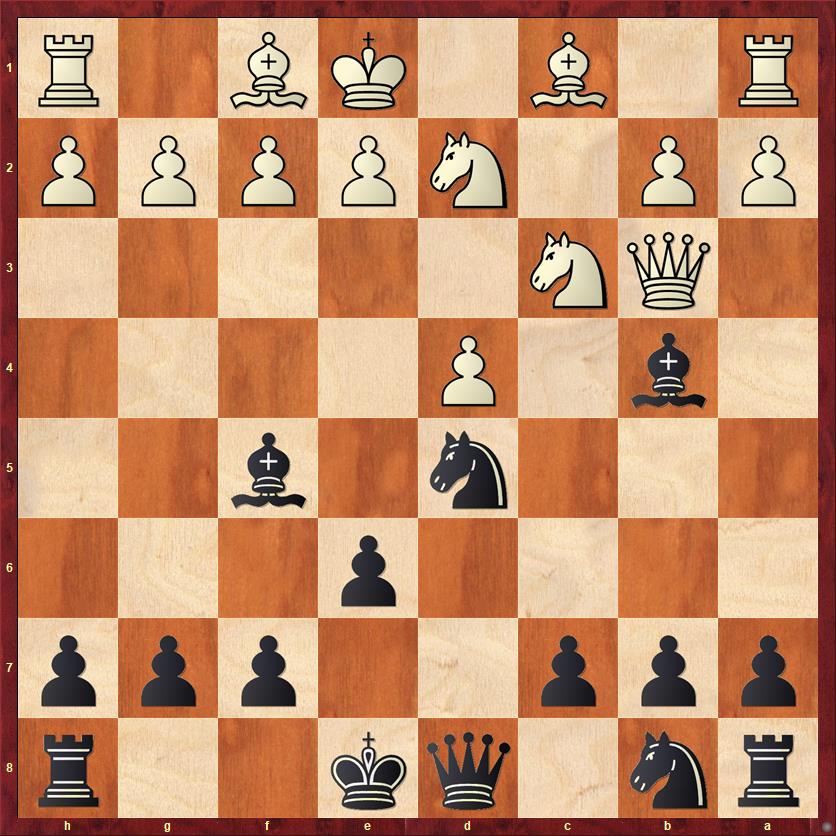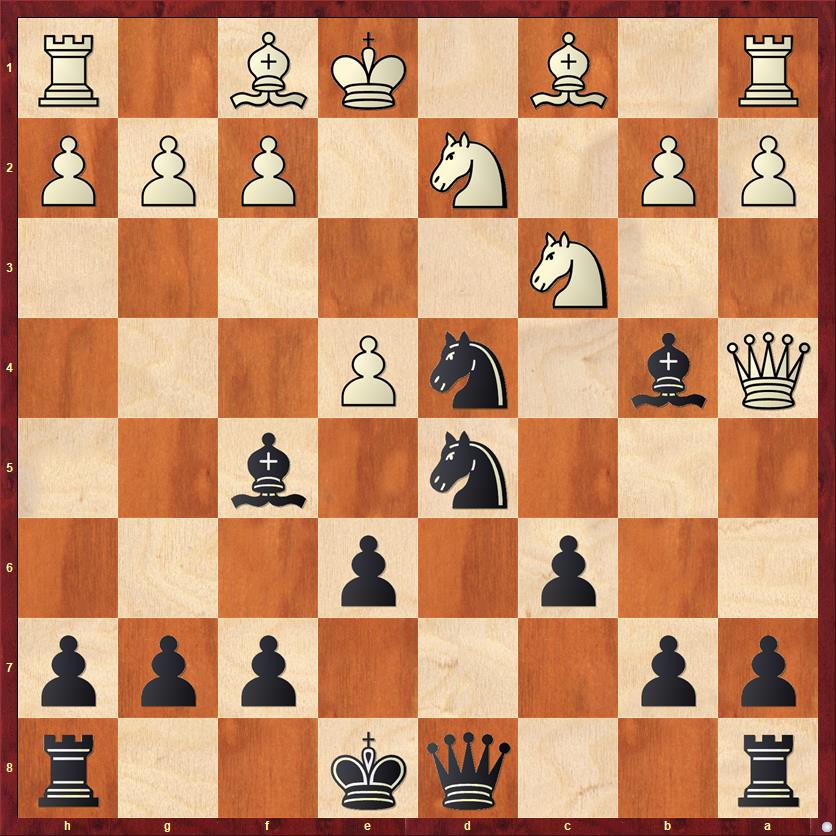What a strange year 2005 was for me over the chessboard. It had some really high highs and some really low lows.
In April, I won the biggest cash prize (up to that point) of my life, taking first place in the Expert section at the Far West Open in Reno. In May I played in the HB Global Challenge in Minneapolis, which was Maurice Ashley’s first mega-tournament that would break all previous records for the largest prize fund. (A few years later he would organize the Millionaire tournaments, which I never played in.) I played in the open section and got off to a decent start, 2.5 points out of 5, but then I ran into a buzz saw and lost my last four games in a row. I also lost five in a row at my next tournament, to run my losing streak to nine straight games, which is by far the longest losing streak I can remember.
It seems as if there is a good lesson here. In 2005, when I entered the expert section I did really well; when I entered the master section I lost a bunch of games. But I hated entering expert sections, because I didn’t consider myself an expert. I was a National Master and had a certificate to prove it. But my rating was a long way from where it used to be. “One of my long-term goals is to get back over the master level (2200),” I wrote in my diary. “That goal now seems virtually unreachable…”
The year ended on a positive note. Eric Fingal, one of my Santa Cruz friends, organized an eight-person invitational tournament called the Santa Cruz Cup. I really enjoyed these tournaments of Eric’s. It’s great to play in a tournament where everyone knows everyone else, where you have a week to prepare for the games and you can share the games with everyone else after they are over. The competition was tough. Four of us (Juande Perea, Ilan Benjamin, Jeff Mallett and myself) were experts, and the other four were class A to B players. Ilan Benjamin had won the first Santa Cruz Cup, in 2003, and I had won the second, the following year. In the 2005 version, for the first time I wasn’t the top seed, because Juande was higher rated than me. But in a tournament that spilled over into January 2006, I managed to defeat both Juande (2.5-1.5) and Ilan (1.5-0.5) in tense mini-matches and claim the mythical title of Santa Cruz champion for the second time.
I have to say that I got incredibly lucky in both of these matches. Juande blundered in a completely winning position against me. And in the very last, tournament-deciding game, Ilan played three blunders in a row that turned his position from +7 pawns (according to the computer) to -6 pawns. But even though I was lucky, it did conform to my pattern of winning against experts and losing against masters.
My original intention was to show you a game I played against Jeff Mallett in the Santa Cruz Cup, but I’ve changed my mind. The games I’ve shown you in recent posts have been extremely complicated, and the Mallett game would have been in the same mold. It’s a messy, messy game where I played a speculative rook sac and both sides made mistakes in an insanely complicated position, with the game eventually coming down to a K+P ending that I thought was a win for me but only turned out to be a draw.
But let’s face it, Messy Chess is what most of us play most of the time. It’s nice every now and then to look at a game that is crystal clear and where everything goes right. So I’m going to show you a miniature from the 2005 Far West Open.
This was perhaps the most absurdly easy tournament I’ve ever played in. The first game was a struggle — I was busted at one point — but after that it seemed as if every game was easier than the one before it. This is exactly the opposite of what you expect in a Swiss System tournament! In the second round I won in 28 moves; in round three I won in 17 moves. In round four I was a piece up after 15 moves, although it took 22 more moves to finish the game. Round five was a breather where I took a draw. And then in round six, needing only a draw to clinch first place in the Expert section, I won in 13 moves! The game was over so fast that some people thought I had agreed to a quick grandmaster draw, and I had to explain, “No, I won.” It was truly a charmed tournament.
Here is my 17-move win from round three. It again showcases one of my favorite openings, the Marshall Defense to the Queen’s Gambit Declined, which I had also used in Year 32 to draw with GM Varuzhan Akobian. In this game my opponent walks right into a piece sacrifice and my pieces coordinate just like clockwork. If only chess could always be this easy…
Edwin Straver — Dana Mackenzie, 3/19/2005
1. d4 Nf6 2. c4 d5 3. cd Nxd5 4. Nf3 …
As you might remember, Akobian played 4. e4 Nf6 5. Nc3 e5! White’s fourth move in this game is a little bit more cautious, and it’s the other main line. When White plays properly, I think he gets a slight pull, kind of like in the Caro-Kann Defense to 1. e4, but Black’s position is very resilient. However, one of the benefits of playing such a little-known opening is that my opponents don’t always play properly.
4. … Bf5 5. Nc3 …
If White wants to get the central pawn duo with pawns on e4 and d4, he should play 5. Nbd2 here. It’s a superior version of what he tries to do later on. But 5. Nc3 can’t be a mistake; it’s a normal developing move.
5. … e6 6. Nd2? …
This move, on the other hand, is a complete disaster. White sees, of course, that 6. e4? doesn’t work because of 6. … Nxc3 7. bc Bxe4. So he doubles down on achieving the e4 thrust, even to the point of moving an already-developed piece to a worse square and blocking his own queen bishop. A better move for White would have been 6. Qb3. (I have played many games against the computer that went this way.)
I had never seen 6. Nd2 before. In a way, though, it helped me to know that the computer had never played this move against me, so it couldn’t really be good.
6. … Bb4 7. Qb3 …

FEN: rn1qk2r/ppp2ppp/4p3/3n1b2/1b1P4/1QN5/PP1NPPPP/R1B1KB1R b KQkq – 0 7
Again, 7. e4? would have been premature, because 7. … Nxc3 8. bc Bxc3 wins material. But now it looks as if White is seriously threatening e2-e4. My response: “Bring it on!”
7. … Nc6! 8. e4? …
White stubbornly, and disastrously, sticks to his plan. He could still play it safe with 8. e3, after which his position is playable, although the five-piece pileup on White’s queenside is obviously not ideal.
8. … Nxd4
I can’t say that I analyzed this all the way to a win for Black, but the lines I saw looked pretty good.
9. Qa4+ c6

FEN: r2qk2r/pp3ppp/2p1p3/3n1b2/Qb1nP3/2N5/PP1N1PPP/R1B1KB1R w KQkq – 0 10
Which way should White take? The short answer is that they’re all bad. The computer shows nearly a 3-pawn advantage for Black, although of course I didn’t know that over the board. For a good tactical exercise, see if you can figure out what’s wrong with each of White’s possible captures.
10. Nxd5 …
I think that the cutest variation is 10. ef Bxc3! The main point is that 11. bc Nxc3 forces White to give up his queen to avoid checkmate! 12. Qc4 Nc2 mate would truly be poetic justice for White’s ignorance of proper piece development.
Of course, White isn’t likely to immolate himself in that way, but other moves are equally terrible, like 10. ef Bxc3 11. fe Qe7 12. Bd3 Qxe6+ 13. Kd1 Qg4+!, with the idea of 14. f3 Ne3+. Or 10. ef Bxc3 11. Bd3 Nb4! 12. Bb1 Nbc2+! 13. Bxc2 b5.
If White captures the other way, 10. ed, my intention was simply to recapture with 10. … ed. Though Black is a piece down, he has too many threats for White to deal with. For example, after 11. Be2 I have a pleasant choice between winning three pawns (!) with 11. … Qe7 12. O-O Bxc3 13. bc Nxe2+ 14. Kh1 Nxc3, or winning the queen with 11. … a5! 12. O-O Bc2 13. Nb3 Nxe2+ 14. Nxe2 b5. White’s queenside pieces are like the five stooges, constantly getting in each other’s way.
10. … ed 11. ef Qe7+ 12. Kd1 a5!
A sweet little “quiet move” that ends the game, because White’s queen has no way to get out of the threatened … b5. Even White’s king has gotten into the five stooges act, because he occupies the queen’s only flight square on d1. White could have resigned here, but he played a few more moves just to see how bad the damage was.
13. Bd3 O-O 14. Nf3 b5 15. Nxd4 ba 16. Bf4 Qf6
At this point White took stock of the position. Two pieces for a queen and a pawn. The knight on d4 will soon be chased away, and then b2 falls, and after that a2… It’s enough already.
17. White resigns
This game has such a harmonious feel that it seems as if it must be a known opening trap. But it’s not! Unless Frank Marshall knew about it. I searched in ChessBase, and the position after 6. … Bb4 has never occurred before in their database.
Lessons:
- Don’t move your pieces twice in the opening without good reason.
- It’s always safer to complete your development before embarking on tactical complications. This is easier said than done, but notice that I was developing pieces (… Bb4, … Nc6) while White was undeveloping his (Nd2) or moving his queen (Qb3).
- Stubbornness is not always a good thing in chess. Sometimes you have to realize you’ve been playing a faulty plan, and take action to minimize the damage (8. e3).
- Even if you can’t calculate a forced win, there are some times when you just have to trust your pieces.
Next up: 2006, and a game that some of you might have been looking forward to seeing again. Any guesses?


